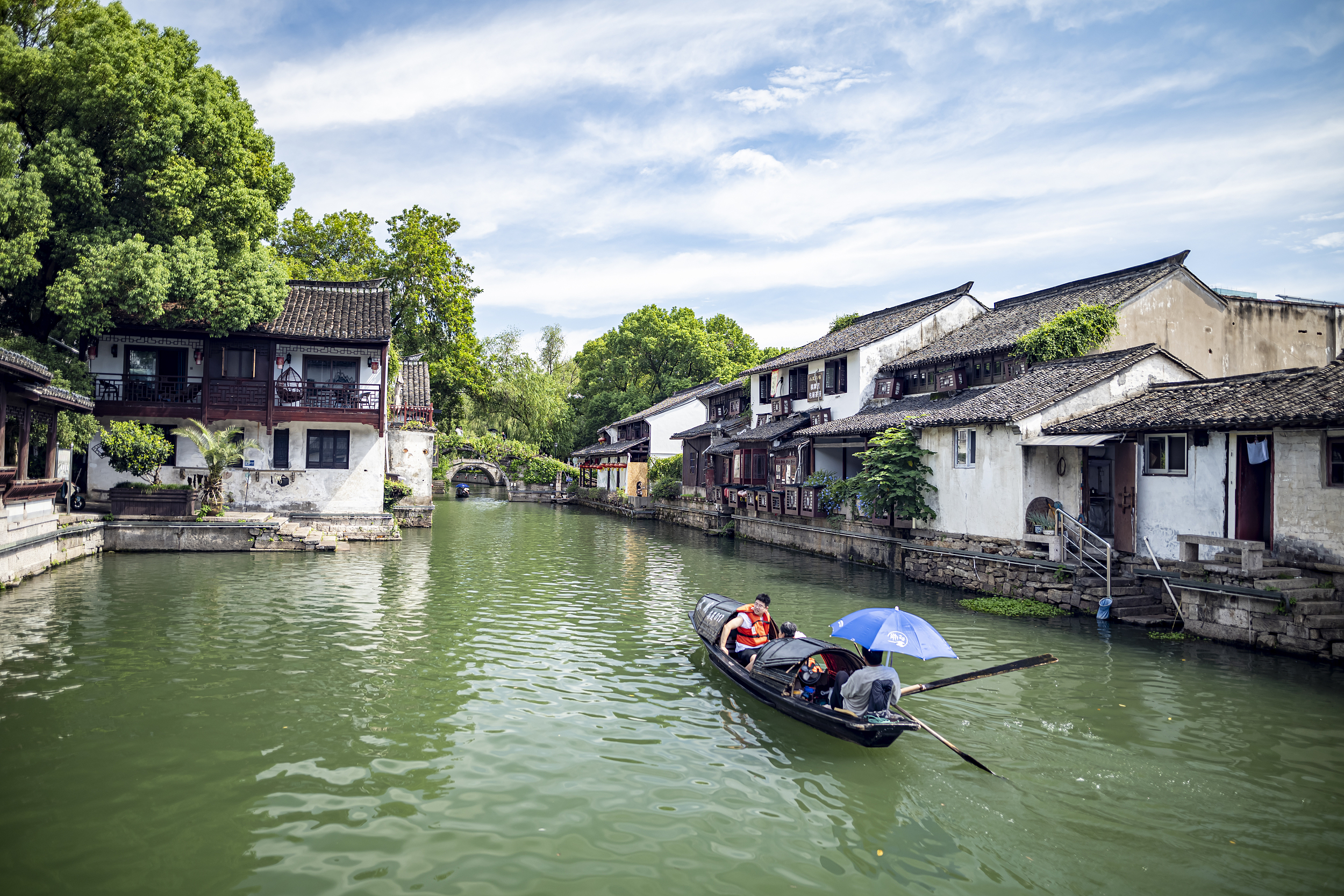Tech Nurtures Zhejiang's Cultural Heritage

The Pangong Bridge, a historic stone arch bridge at Wuxing district of Huzhou, Zhejiang province. (PHOTO: VCG)
By SUN Mingyuan, TENG Jipu, JIANG Yun, LI Zhongming & CHEN Chunyou
The sustainable development of intangible cultural heritage relies on inheritance and pioneering innovation.
Thanks to protection and innovative development, the cultural heritage in Zhejiang province in east China has not been overshadowed by its bustling metropolises. Instead, ancient buildings and traditional processes have added cultural charm and luster to them.
Minimal intervention in restoration
The city of Huzhou in northern Zhejiang follows the principle of preserving the authenticity of historical relics through minimal intervention. Before 2018, cultural protection workers mainly used traditional techniques to repair buildings.
The emergence of new materials in recent years has opened a novel path for cultural protection, Wang Jing, deputy director of Huzhou Cultural Relics Protection and Management Institute in Zhejiang, told Science and Technology Daily.
Since 2019, new materials and new coatings have unlocked new possibilities for the restoration of cultural relics. "If some damage is detected in historical buildings, workers now use new materials to repair and reinforce their structure, rather than replace the building materials completely," Wang said. "This approach not only reduces the cost, but also preserves the original appearance and characteristics."
Another boon for conservation is the ability to monitor immovable cultural relics real-time. With sensors and software, workers can check the cultural relics and their surroundings whenever and from wherever they want.
Take the protection of the Pangong Bridge, a historical stone arch bridge in Huzhou's Wuxing district, as an example. Workers can access data like its stress structure, displacement and settlement level at any time to check the condition of the ancient bridge, which enables prompt maintenance and response to emergencies.
Many ancient bridges are still functional, with ships passing under them and pedestrians crossing over them. "Such technologies help us do a good job of protection," Wang said.
Old sauce in new bottle

Tourists go sightseeing on a boat along the Cangqiao Straight Street in Shaoxing, east China's Zhejiang province, which is a historical and cultural street with unique ancient houses. (PHOTO: VCG)
Soy sauce is used in nearly every Chinese food recipe and doubles as a delicious dip for dumplings and other dishes. Shaoxing city in south Zhejiang is famous for its traditional method of producing this sauce in addition to its well-known local wine.
The core process of traditional soy sauce making involves open-air drying, which is the key to its unique flavor. However, the soy sauce produced in the olden days would not meet today's hygiene standards as during the open-air drying things like insects and air-borne particles were bound to fall into it. How to preserve the essence of the ancient method while adapting modern standards and creating a better flavor?
"Technological innovation is the key to addressing this challenge," said Teng Junkang, deputy general manager of Renchang Sauce Garden, a family business said to have been found during the Qing Dynasty.
"Using a specially-made protective mesh cover made of stainless steel, we prevent pollution sources, like flying insects. Then a polymer filter membrane is used to strain the sauce for impurities and microorganisms, and thus the traditional soy sauce that meets the standard is produced," Teng explained.






